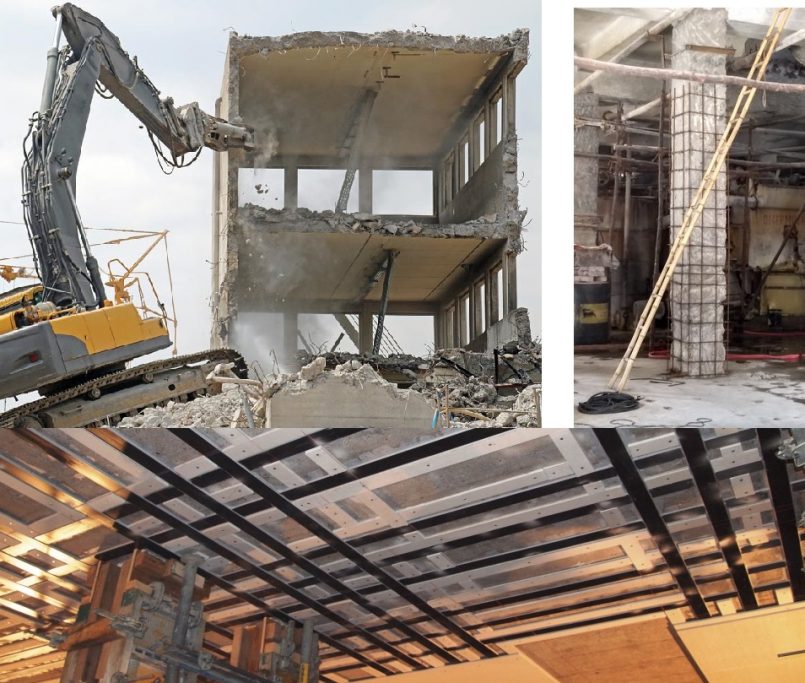How to Construct a Manhole? [PDF]
A manhole or an inspection chamber is an underground unit constructed to provide access to the utilities like a sewer system, drainage system, etc. Hence, with the help of a manhole, underground utilities are inspected, modified, cleaned, and maintained.

In this article, we discuss the specification of construction for manhole.
1. Excavation
- The excavation for manhole shall be as per the dimensions and levels specified in the plan or drawings.
- The excavation width shall include the necessary working space for accessibility for the mason to work freely below the ground.
2. Bed Concrete
- A bed concrete of 1:4:8 shall be laid over which the manhole shall be constructed.
- The minimum thickness of bed concrete shall be 20cm and 30cm for manholes of depth up to 4.25m and above 4.25m, respectively.
- In the case of loose soil, special foundations shall be constructed to support the manhole.
3. Brick Masonry
- The standard quality of bricks used in the construction of manholes shall be of class 7.5N with cement mortar of 1:4 ratio.
- For arched type and circular manholes, the cement mortar ratio shall be 1:3 (1 cement: 3 fine sand).
- Up to a depth of 4.25m, the walls of the manhole shall be built using one brick thickness.
- Manholes below the depth of 4.25m depth in ordinary soil shall be built using one and a half brick, and if the manhole is below 9.75 m, the walls of the manhole shall be constructed of two brick thickness.
- The finishing of the brick masonry in the external face shall be finished smooth.
- The joint of the masonry and pipe shall be specially treated to make it perfectly leak proof.
- The excess shaft in the circular manholes shall be corbelled inwardly at the top to reduce its size to the cover frame to be fitted.
4. Plaster and Pointing
- The inside of the brick masonry of manhole shall be plastered with a 12mm thick 1:3 cement mortar.
- For circular or arched type of manhole, the plastering shall be entirely up to the crown level with cement mortar 1:2.
- Generally, the outer side of the manhole isn’t plastered, but in the case of saturated soil, the external surface of the manhole shall also be plastered with a 12 mm thick cement plaster 1:3.
- The inside plastered surface shall be waterproofed with a waterproofing agent.
5. Channel and Benching
Benching in manholes refers to the path made out of cement mortar to directing the waster water in a certain direction and stop the splashing of waste, which in turn damages the manhole.
- The channels and benching in a manhole shall be constructed using cement concrete of ratio 1:2:4.
- The finish for the channel and benching shall be smoothly and neatly finished.
- The depth of channels and benching shall be as given in Table 1 below-
Table 1: Depth of Channel and Benching
| Sizes of drain in mm | Top of channel at the centre above bed concrete in Cm | Depth of benching at side walls above bed concrete in cm |
| 100 | 15 | 20 |
| 150 | 20 | 30 |
| 200 | 25 | 35 |
| 250 | 30 | 40 |
| 300 | 35 | 45 |
| 350 | 40 | 50 |
| 400 | 45 | 55 |
| 450 | 50 | 60 |
6. Footrests
The footrests in the manholes are provided for easy accessibility in case of cleaning and Maintainance.
- Footrests are provided in the manholes if the depth of the manhole exceeds more than 0.8m.
- The footrest shall be of PVC or mild steel.
- Any type of footrest, either PVC or mild steel, shall be embedded 200mm deep in the 200x200x100 mm block of concrete of 1:3:6.
- The footrest shall be placed staggered laterally and 40cm apart vertically.
- The footrest shall protect 100mm beyond the inner surface of the manhole walls.
- The first footrest shall be placed 450mm below the manhole cover.
- The mild iron footrest shall be painted with coal tar to protect it from corrosion.
7. Manhole Covers and Frames
- The manhole cover shall be gas-tight and watertight.
- The manhole covers and frames shall be of the following four grades, types, and place of use.
Table 2: Manhole grade, Designation, Shape, and Application.
| Grades | Grade Designation | Type / shape of cover | Application |
| Light Duty | LD – 2.5 | Rectangular, Square, Circular | Residential and institutional complexes/areas with pedestrian but occasional LMV traffic. |
| Medium Duty | MD – 10 | Rectangular, Circular | Service lanes/roads, car parking areas etc. |
| Heavy Duty | HD – 20 | Circular, Square, Rectangular, (Scrapper Manhole) | Institutional/commercial areas/carriageways with heavy-duty vehicular traffic like buses, trucks, etc. |
| Extra Heavy Duty | EHD – 35 | Circular, Square, Rectangular, (Scrapper Manhole) | Carriageway in commercial, industrial/port areas/near warehouses/godowns having wheel loads up to 11.5 tonnes |
3. After completion of the construction of the manhole, the covers shall be sealed employing thick grease.
FAQs
1. What is a Sewer Manhole?
A manhole or an inspection chamber is a unit constructed underground to provide access to the utilities like a sewer system, drainage system, etc. Hence, with the help of a manhole, underground utilities are inspected, modified, cleaned, and maintained.
2. What is benching or channeling in manhole?
Benching in manholes refers to the path made out of cement mortar to directing the waster water in a certain direction and stop the splashing of waste, which in turn damages the manhole.
3. What is the type of brick used in the construction of manholes?
The standard quality of bricks used in the construction of manholes shall be of class 7.5N with cement mortar of 1:4 ratio. For arched type and circular manholes, the cement mortar ratio shall be 1:3 (1 cement: 3 fine sand).
4. What is the thickness of the walls in a manhole?
Manholes up to a depth of 4.25m, the walls of the manhole shall be built using one brick thickness. Below the depth of 4.25m depth, manholes shall be built using one and a half brick, and if the manhole is below 9.75 m, the walls of the manhole shall be constructed of two brick thickness.















